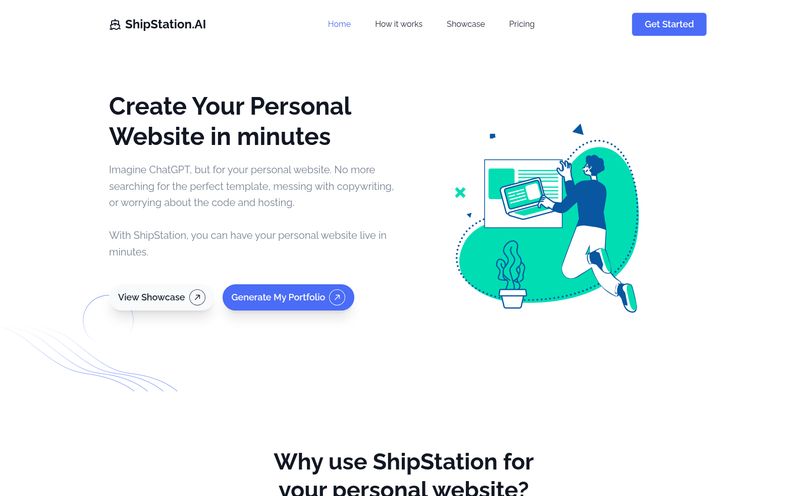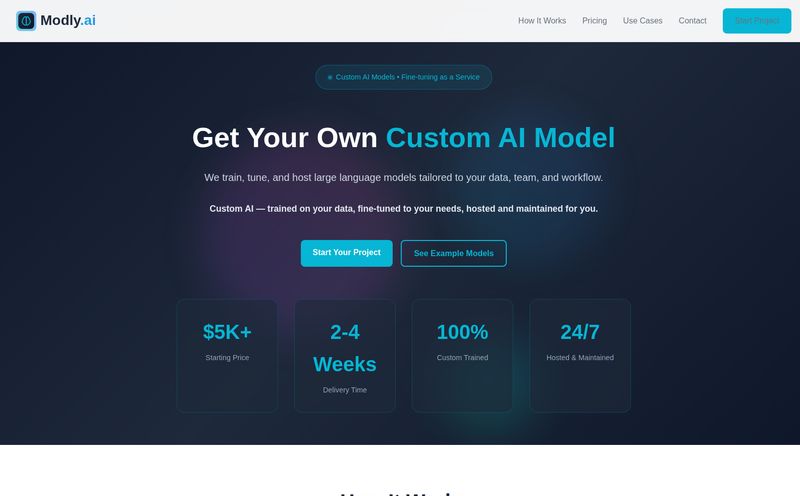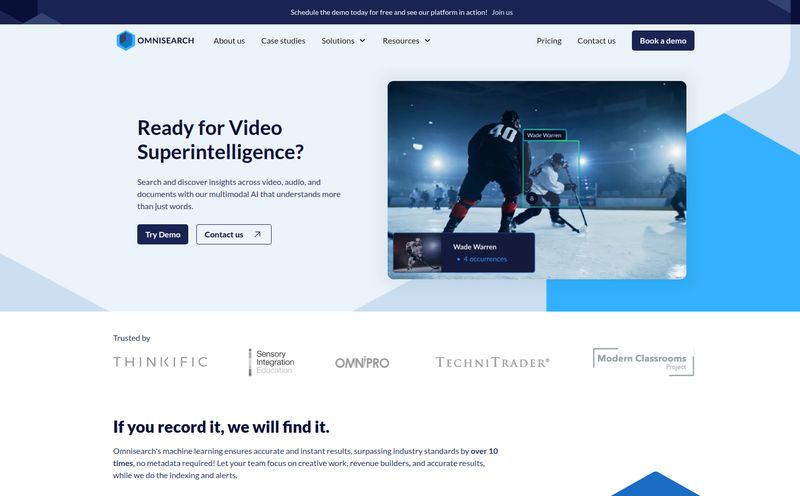In the world of SEO and digital marketing, we're constantly bombarded with the “next big thing.” Every other day, a new tool pops up promising to revolutionize how we work, generate traffic, or engage with customers. Lately, the big wave has been all about custom AI and private GPTs. And honestly? I'm here for it. The idea of training an AI on your own business data—your help docs, your product specs, your internal wikis—is just... chef's kiss. It's the kind of tech that gets me genuinely excited.
So, when I first heard about a platform called LeapBox, my ears perked up. The pitch was simple and seductive: build your own private GPTs without any coding. Just upload your stuff, click a button, and boom—a custom-trained AI ready to go. For small teams, non-technical founders, or even grizzled marketing vets like me who'd rather spend time on strategy than in code, this sounded like a dream. But then, something weird happened. When I went to go check it out... well, we'll get to that.
So, What Was LeapBox Supposed to Be?
Before we get into the mystery, let's talk about what LeapBox was putting on the table. At its core, it was designed as an AI-powered knowledge management solution. Think of it like giving your company its own private brain. You feed it all your documents, spreadsheets, PDFs, website content—whatever you have—and it learns from it. The end result is a chatbot or AI assistant that can answer questions with stunning accuracy, but only using the information you've provided. No more generic answers from the wider internet, just pure, unadulterated knowledge from your own data vault.
This is a huge deal for customer support, internal training, or even as a research assistant for your team. Imagine a new hire being able to ask an internal GPT, “What was our Q3 revenue in the European market last year?” and getting an instant, accurate answer pulled from a specific report. That’s the kind of efficiency we're all chasing.
The Features That Honestly Sounded Awesome
I get pitches for new SaaS tools all the time, and most of them are just re-skinned versions of something else. LeapBox, however, had a few features that made it stand out from the pack.
Build Your Own AI Without a Lick of Code
This is the big one. The no-code revolution has already transformed web design with platforms like Webflow and automation with tools like Zapier. Bringing that same simplicity to building custom AIs is the logical next step. LeapBox claimed you could do it all through a simple interface. Upload, train, deploy. No need to hire a team of data scientists or wrangle complex APIs (though they offered an API for those who wanted it). This democratizes the technology, taking it out of the hands of a few giant corporations and putting it into the hands of, well, everyone.
Your Data, Your AI, Speaking Your Language
Another thing that caught my eye was the multilingual support. The platform wasn’t just built for English-speaking companies. You could create knowledge bases in any language and for any language. For any of us working with international clients or global teams, this is a massive plus. It also boasted about streamlined data ingestion, meaning you could throw different file formats at it and it would just… figure it out. That's a far cry from the tedious data-cleaning process that usually comes with these kinds of projects.
Plugging It Into Your Workflow
A tool is only as good as its integrations, right? It doesn't matter how brilliant it is if it lives on an island. LeapBox seemed to get this. They were offering integrations with the platforms we actually use every single day: WhatsApp, Discord, Slack, Telegram, and even corporate mainstays like DingTalk and Drupal. The idea of having your company's private AI assistant living right inside your team's Slack channel is incredibly powerful. That's not just a tool; it's a team member.
The Elephant in the Room… The Big 404
Okay, so I was pretty sold on the concept. I was ready to poke around, maybe sign up for a trial, and see if the reality lived up to the hype. I navigated to their site, and this is what I saw:

Visit LeapBox
A “404 Page not found.” A digital dead end.
My heart sank a little. It’s the digital equivalent of showing up to a new coffee shop everyone’s been raving about, only to find a “For Lease” sign in the window. What does this mean? In my years of watching startups rise and fall, a 404 on a main product page can mean a few things:
- They're pivoting. The original idea didn't get traction, so they've pulled it down while they retool for a different market.
- They got acquired (an "acqui-hire"). A bigger company might have bought them for their talent and tech, and the original product is being absorbed or shut down.
- They ran out of runway. The unfortunate reality for many startups is that the funding dries up before the product takes off.
- It's just a temporary technical glitch. Maybe. But for a tech company, that’s not a great look.
Whatever the reason, it's a bummer. And it serves as a good reminder about the volatility of the tech world. Don't build your entire business process around a brand-new tool until you're sure it's going to stick around.
Let’s Talk About the Pricing (Or Lack Thereof)
Even before I hit the 404 wall, there was one little red flag for me: the complete absence of a pricing page. This is a personal pet peeve of mine. When a SaaS company hides its pricing, it usually means one of two things: it’s incredibly expensive and geared only toward enterprise clients with deep pockets, or they haven’t figured it out yet. Either way, it creates a barrier. I want to know if a tool is within my budget before I invest time in a demo or a sales call.
For a tool like LeapBox, I would expect a tiered pricing model, something like:
- A free or cheap tier for small projects.
- A mid-range tier for small businesses, based on usage or number of documents.
- A custom enterprise tier with all the bells and whistles.
The lack of transparency here, combined with the now-missing website, paints a picture of a product that was perhaps still in its very early, uncertain stages.
So, Where Do You Go From Here? LeapBox Alternatives
While LeapBox might be a digital ghost for now, the dream of a no-code custom GPT builder is very much alive. If the idea piqued your interest, don't despair! There are other options out there you can explore right now.
One obvious choice is using OpenAI's own Custom GPTs feature if you have a ChatGPT Plus subscription. It's incredibly user-friendly and allows you to upload your own files to create a specialized GPT. For more robust, customer-facing solutions, you might look at platforms like Chatbase or Voiceflow, which are designed for building sophisticated AI agents and chatbots. They might have a bit more of a learning curve than what LeapBox promised, but they are established and have solid track records.
Frequently Asked Questions
- What was LeapBox supposed to do?
- LeapBox was a platform designed to let users build their own private, custom AI chatbots (GPTs) using their own data, like company documents and website content, without needing to write any code.
- Do I need to be a programmer to build a custom AI?
- Not anymore! While it used to be a highly technical task, tools like OpenAI's Custom GPTs and other no-code platforms are making it possible for anyone to create a basic custom AI by simply uploading files and giving instructions in plain English.
- Why is my own data quality so important for a private GPT?
- Because the AI is only as smart as the information you give it. This is a classic “Garbage In, Garbage Out” scenario. If your source documents are outdated, inaccurate, or poorly organized, your AI’s answers will be too.
- What does a 404 error on a product's website usually mean?
- It can mean many things. The company could have shut down, been acquired, or is in the middle of a major website overhaul or product pivot. In any case, it suggests the service isn't currently available as advertised.
- Are there other no-code AI builders I can use instead?
- Yes, absolutely. Some popular and reliable alternatives include OpenAI's native Custom GPT builder, Chatbase, and Voiceflow, each with its own strengths for different use cases.
- Is building a private GPT secure?
- This is a critical question. Reputable platforms will have strict data privacy policies. When you use a tool like OpenAI's Custom GPTs for teams, for instance, they state that your data won't be used to train their public models. Always read the privacy policy before uploading sensitive company information.
A Promising Idea, A Cautionary Tale
So, what's the final word on LeapBox? It was a fantastic idea. It represented a trend that I'm fully on board with: making powerful AI technology accessible and practical for everyone. The feature set—no-code, multilingual, great integrations—was exactly what the market is hungry for.
But its current MIA status is a powerful lesson for all of us in the fast-moving tech space. Hype is one thing, but stability and reliability are everything. While I'll keep an eye out to see if LeapBox ever re-emerges from the digital shadows, for now, it stands as a ghost of a good idea. The future of no-code AI is bright, but as with any gold rush, not every prospector is going to strike it rich. Let's keep digging.
Reference and Sources
- Introducing GPTs by OpenAI
- Chatbase - Custom GPT for your data
- Voiceflow - Collaborative AI Agent Builder



